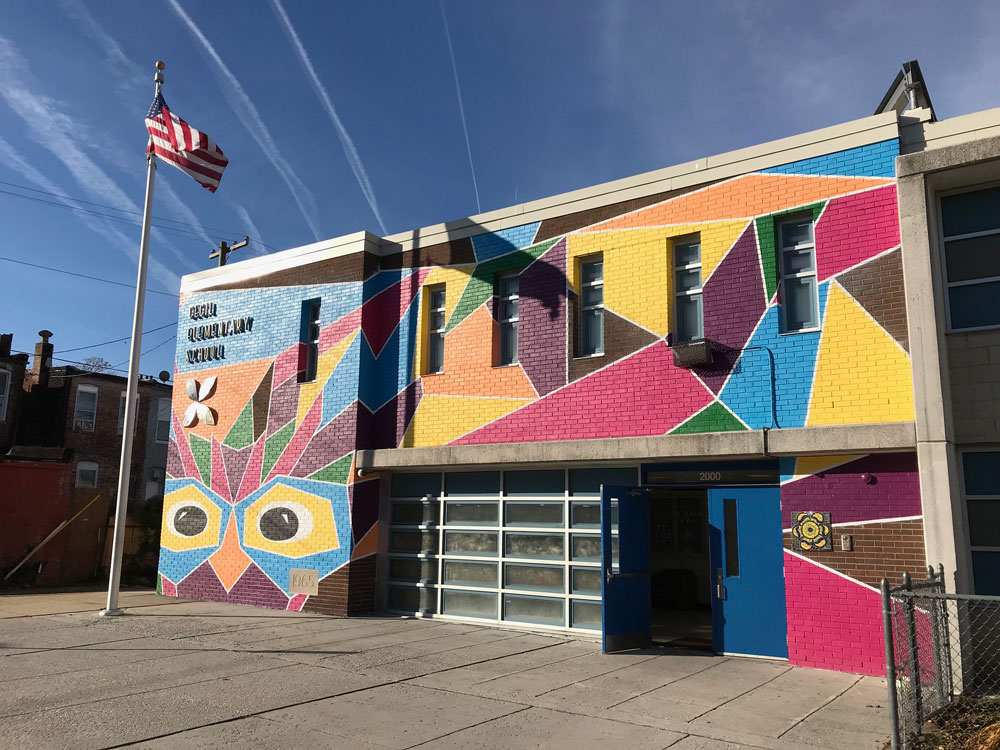
September 28, 2020; WMAR-TV (Baltimore, MD)
When students misbehave, teachers and principals must respond. They’re the ones responsible for making sure schools provide safe learning environments for all students. Too many schools, however, rely on a punitive philosophy that leans on suspensions and a growing cadre of resident police officers. The harm of this approach falls heavily on BIPOC [black, indigenous and people of color] students. But there are ways to manage conflict nonviolently and support these students.
In 2015, as noted by NPQ, then-President Barack Obama challenged educators to rethink their approaches when he spoke to the NAACP’s National Convention:
And we have to have the same standards for those children as we have for our own children. So if you are a parent, you know there are times when a boy or a girl are going to act out in school. And the question is, are we letting principals and parents deal with one set of kids and we call the police on another set of kids. That’s not the right thing to do. We have to make sure that our juvenile justice system remembers that kids are different; don’t just tag them as future criminals, reach out to them as future citizens.
A recently published report by the Open Society Institute-Baltimore (OSI) gives us some good news: We can build schools that support all our children. OSI was asked to look at the progress Baltimore city schools have made on their 2016 commitment to implement a restorative justice approach to school discipline and management. OSI examined how 14 schools that were asked in 2018 to pilot Baltimore’s brand of restorative justice had done. Two years in, there is reason to consider expanding the effort include all 168 schools.
Maryland’s Commission on the School-to-Prison Pipeline and Restorative Practices describes a restorative approach to school management as one that combines a relationship-focused mindset with distinctive tools to “create a school climate and culture that is inherently just, racially equitable, and conducive to learning for all students.” As described by OSI:
Restorative practices invite educators to shift from more punitive disciplinary practices to approaches that seek to resolve problems that emerge among school community stakeholders. When harm occurs in a restorative school, all affected parties are given an opportunity to voice their concerns, and collaboratively develop a plan of action to resolve the matter. This community building process promotes accountability, reinforces community norms, and restores the school community in a proactive, supportive way.
Sign up for our free newsletters
Subscribe to NPQ's newsletters to have our top stories delivered directly to your inbox.
By signing up, you agree to our privacy policy and terms of use, and to receive messages from NPQ and our partners.
Baltimore school leaders took this definition to heart. The 14 pilot schools have used techniques like restorative circles and conferences with families to manage student misconduct and conflicts—situations that might have led to punishment or suspension. The report says, “Restorative interventions are being used most commonly for student verbal conflicts (87.2 percent), general preventative dialogue (86.2 percent), and minor nonphysical behavior infractions (75.5 percent). Schools are also using restorative responses to address student/staff verbal conflicts (63.8 percent), bullying (62.8 percent), major behavior infractions (61.7 percent), student/staff physical conflict (41.5 percent), vandalism (20.2 percent), truancy (16 percent), alcohol/substance abuse infractions (5.3 percent), and other (5.3 percent).”
A Baltimore City Schools Police Officer summarized this approach from a law enforcement perspective, noting, “Students and even adults need an outlet to be able to decompress from what they have experienced over the weekend or even on the journey to and from school. Having a morning circle gives them that space and lets everyone see each other as humans, not teacher and student, not student and officer, just real people.”
Two years after it began, OSI’s study, as summarized by WMAR, has uncovered promising signs. Across the 14 pilot schools…
- “School suspensions dropped by 44 percent in one year.”
- “72 percent of school staff reported improved school climate.”
- “69 percent of school staff reported improved student respect for one another.”
- “64 percent of school staff reported improved student respect for staff.”
On the other hand, there’s still work ahead. Some students, families, and staff are dubious of the restorative justice (RJ) approach and remain more comfortable with traditional disciplinary responses. The ongoing process of engagement requires staff time, additional training, and funding. Not to mention “the difficulty incorporating RJ into an already compact teaching schedule.”
Lastly, as optimistic as OSI’s findings are, they should not prevent us from seeing that schools and students live in a larger social context. A healthier school environment is only part of the solution. As Eli Hager, writing for The Marshall Project reminds us, “Broadly speaking, restorative justice can never be more than a partway measure…it happens after the fact. To eliminate the harm that we do to one another, they say, would require national investment in alleviating generational poverty often born of racial segregation and expanding mental-health and drug-addiction treatment, among other things.”
Baltimore’s experiment shows restorative justice can improve schools and students’ lives. But larger systemic changes are also required.—Martin Levine













